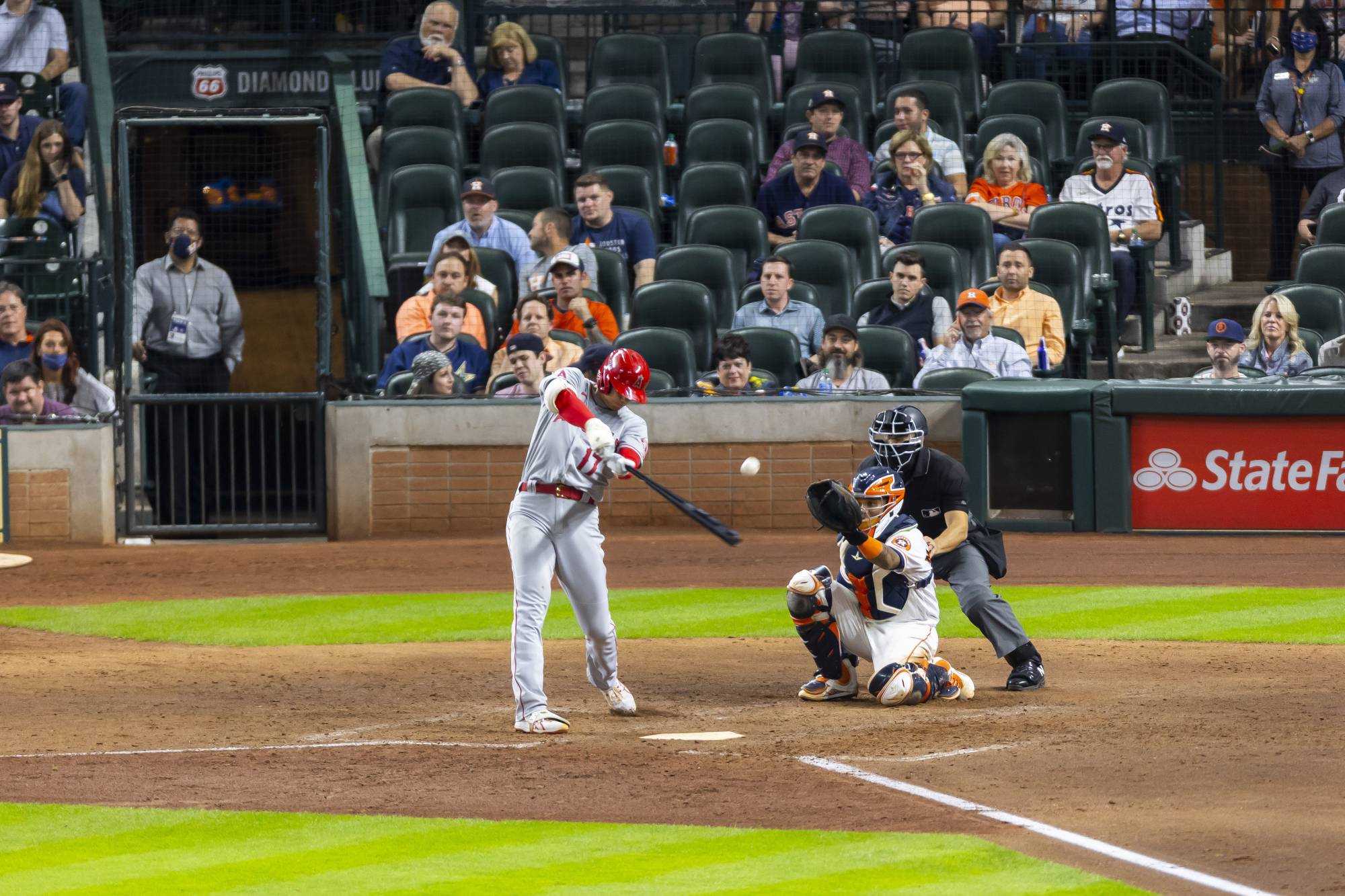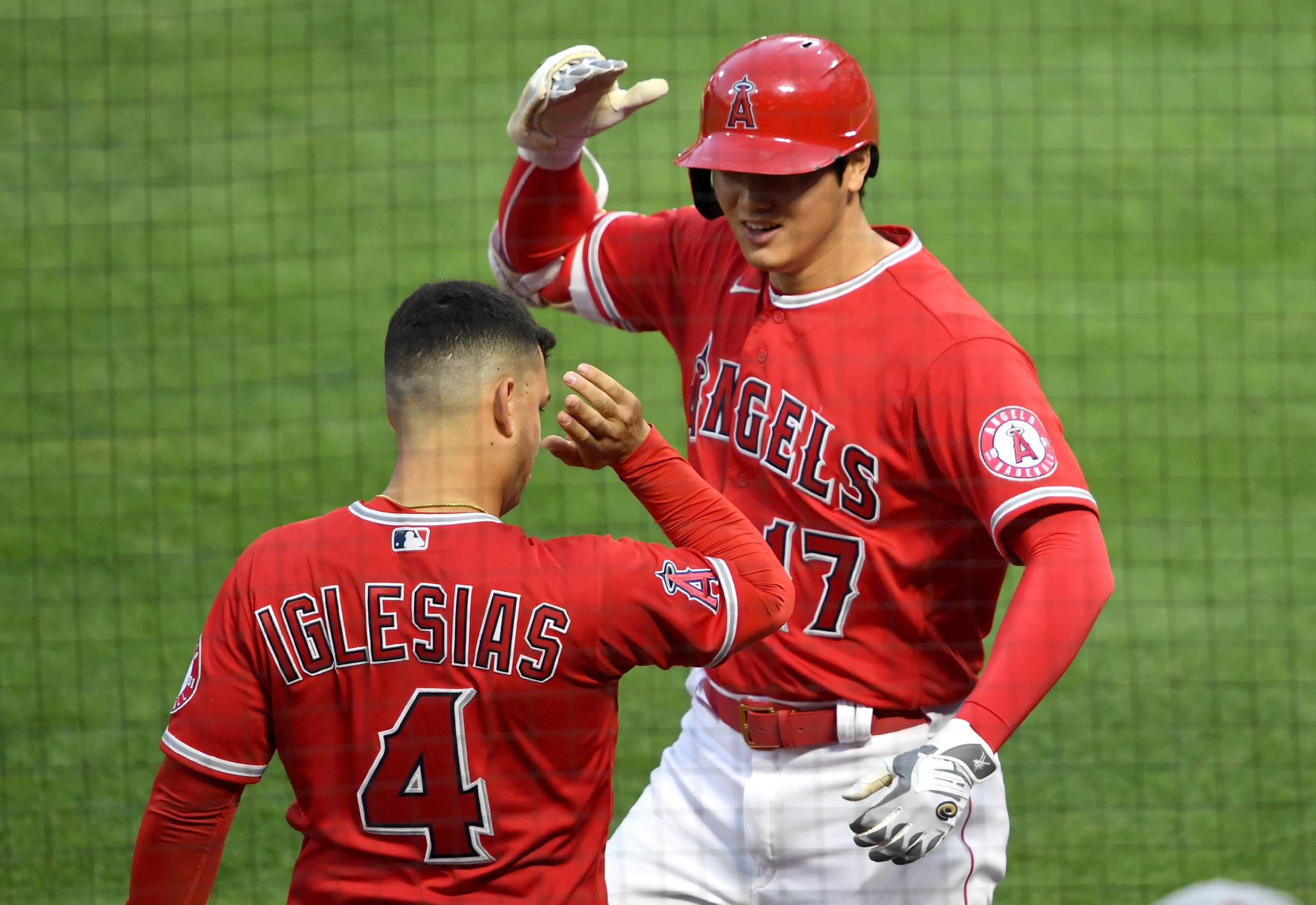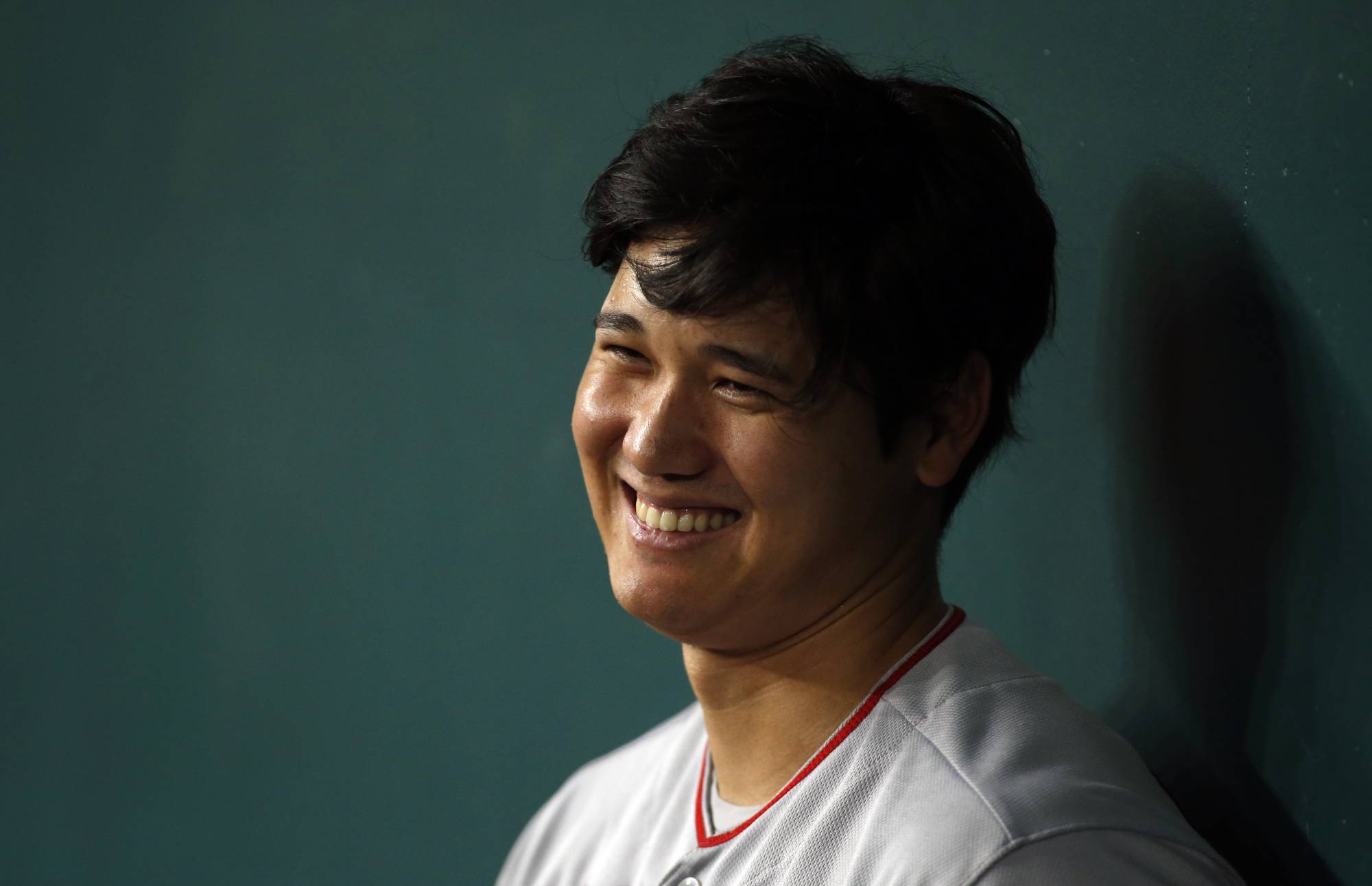Anaheim, Calif. – Seventy-two years after his death, Babe Ruth, again, is having a moment. So, too, are Ted Radcliffe, Harvey Haddix, Sudden Sam McDowell, Bullet Joe Rogan, Leon Day and many others.
These baseball relics are rushing past like freeway signs while going 99 mph — which is how fast Shohei Ohtani’s world-class fastball topped out in his seven-inning, 10-strikeout start in Houston on Tuesday. Or maybe 119 mph — the speed off the bat of Ohtani’s two-run double on April 12, which was the second-hardest hit ball in the majors this season.
Both marks are elite in a spring of wonderful possibilities as this extraordinary, two-way throwback to flannel uniforms and sepia-toned images flourishes just as the Los Angeles Angels hoped he would when they signed him as a free agent from Japan before the 2018 season.
“Obviously, the last two years, I’ve been hurt,” Ohtani, who throws right-handed and bats left-handed, said in a videoconference, referencing his 2018 Tommy John surgery, 2019 left knee surgery and 2020 forearm strain. “My first year, I wasn’t able to pitch the second half of the season.”
“I came here to do the two-way thing,” he added. “That’s a big motivation for me, to try to prove to everyone I’m capable of that.”
Healthy and unrestricted from the self-imposed rules that governed him with the Hokkaido Nippon-Ham Fighters in Japan — and in the beginning with the Angels — this, now, is Shohei Ohtani unleashed.
“Spectacular, right?” Angels manager Joe Maddon said after making the unusual move of switching Ohtani to right field from pitcher in the eighth inning on Tuesday so he could remain in the lineup for a key ninth-inning at-bat.
“It’s pretty special what he’s doing,” Albert Pujols said just before he and the Angels parted ways.

Ohtani has frequently been referred to as the Japanese Babe Ruth, and in Texas on April 26, he became the first American or National League player since Ruth, on June 13, 1921, to start a game on the mound while leading his league in home runs.
It is as if Ohtani were racing to make up for lost time, which, in many ways, he is. Though he won the AL Rookie of the Year Award in 2018, an elbow injury limited him to 10 pitching starts, during which he went 4-2 with a 3.31 ERA and 63 strikeouts in 51 2/3 innings. Still, he continued as the club’s designated hitter and batted .285 with a .361 on-base percentage, .564 slugging percentage, 22 homers and 61 RBI in 104 games. He posted similar offensive numbers in 2019 as a designated hitter while rehabilitating his elbow.
Then last year turned “pathetic” — his harsh self-assessment in the pandemic-shortened, 60-game season. His pitching comeback ended after two starts and a 37.80 ERA. He strained his forearm in a torturous outing against Houston, leaving after a 42-pitch second inning. He continued to hit, but finished the season batting .190.
There were logical explanations. Because of the pandemic, Ohtani was unable to make rehabilitation starts in the minors, resulting in his immediately facing major league hitters. At the plate, some thought that he was not getting full extension on his swing because of the forearm strain.
Regardless, Ohtani, 26, returned to Japan last winter filled with determination. He rebuilt the lower half of his body, strengthening his base. He changed his diet, spurred by blood work that allowed him to learn which foods fueled him and aided his recovery. In a thorough debriefing, his agent Nez Balelo told him, “Let’s reexamine things and make some adjustments.”
“He was all about it,” Balelo said. They were so excited by the results that at winter’s end, “we decided let’s take off the Ohtani rules and get back to having a good time, having fun, see where it all lays.”
The so-called Ohtani rules were junked in February in a conference room at the Angels’ spring camp in Tempe, Arizona. In a meeting before spring training that included the Angels’ new general manager, Perry Minasian, Maddon, Ohtani and Ohtani’s longtime translator, Ippei Mizuhara, the group agreed on a blueprint that would free Ohtani to be in the batting lineup not only on the days before and after he pitched, but also on the days of his starts.
In Japan, he did not play on the day before a start so he could focus on his mound duties or on the day after so he could concentrate on recovery. That plan, as well as not hitting on days he pitched, remained in effect when he signed with the Angels.
“My thing coming in here was, I don’t believe in placing limits on guys,” Minasian said. “I never have. These are professional athletes, the best at what they do. Only a certain amount of players get to this level. So a guy like him, to me it didn’t make any sense to put any limitations on him.”

Recalibrated both physically and mentally, it’s almost as if Ohtani were reintroducing himself. The Angels have noticed small moments of emotion that were absent before. A fist pump after a big hit. A spirited yelp after a key strikeout. Waving goodbye to a Mike Trout home run.
He has always had a sense of humor. He once got such a kick out of a small drone someone brought into the clubhouse in Hokkaido that he worked to perfect the art of landing it on the heads of unsuspecting teammates. But when it’s time to work, nobody is more zealous.
“When you push the refresh button and reevaluate everything as a player, mentally it is refreshing,” Balelo said. “It is, ‘OK, I can take a deep breath, this is new, this feels good, let’s mix things up, why not?’ He was coming off of a COVID year that took him out of his routine. And it wasn’t like he was not healthy.”
Minasian scouted Ohtani both as an amateur and as a professional when he was with the Toronto Blue Jays, and has been dreaming about him ever since.
“I could never get it out of my own mind what I saw,” Minasian said. “He was as talented as any player, from an age standpoint, as I’ve seen. There are things that he can do on a baseball field that other people can’t.”
Ohtani, whose father played baseball in Japan’s industrial league and whose mother was a standout badminton player, recognized that as a youngster. He hoped to leap straight from high school in Japan to the major leagues in the United States. He told this to clubs before the 2012 Nippon Professional Baseball draft and emphasized it to Hokkaido when it informed him it wanted to make him the No. 1 overall pick. The Los Angeles Dodgers were keenly interested at the time, but Hokkaido lured him with the idea of allowing him to pitch and hit.
Takashi Ofuchi, the Fighters’ amateur scout group leader who evaluated Ohtani for years and helped develop the plan, told Bleacher Report in 2017: “If a person has the possibility to do everything, we need to look at that person and his talent and bring his skills along all at the same time. It’s like Michelangelo and Einstein. They could do art, science, everything.”
Ohtani has been painting with bold, broad brush strokes ever since. And in an age of specialization, the Angels and Ohtani are zigging while everybody else is zagging. Why, indeed, place a fence around creative genius?
Through Wednesday he was ranked second in the majors in home runs (10) and extra-base hits (21) and tied for third in total bases (78). On the mound, he is 1-0 with a 2.10 ERA over five starts with 40 strikeouts and a .126 opponents’ batting average. He even leads the Angels with six stolen bases.
In Seattle a couple of Sundays ago, he was hit by a pitch and immediately stole second and third. “I could not have loved that moment any more,” Maddon said.

In a precautionary move, the Angels moved his start, which had been scheduled for the next day, to midweek, but he still smashed a two-run homer and circled the bases to chants of “MVP! MVP!”
“Think about it,” the former big leaguer José Mota, now an Angels television analyst, said. “This kid, and he’s still a kid, is under so much pressure. Every eye in Japan is on him. It’s intriguing: Is he really a Babe Ruth? He’s a super freak. You go, ‘That’s a lot of pressure on somebody.’ But you know what? He does not see it that way. His clear, mental thinking allows him to take care of what’s on hand in the moment.”
When Ohtani moved to right field in Houston, he became just the third player in the modern era to strike out at least 10 batters and play another position in the same game, according to the Elias Sports Bureau, joining McDowell (July 6, 1970) and Haddix (Sept. 28, 1952).
While Ruth comes up frequently, the line between him and Ohtani is more jagged than people realize. With Major League Baseball now recognizing the Negro leagues as having been major leagues, a process is under way with Elias to blend in those statistics. Day, Rogan, Radcliffe and Martín Dihigo were two-way stars during the Negro leagues’ run from 1920 to the late 1940s. And Radcliffe earned one of the game’s most colorful nicknames: Double Duty.
Double duty is what continues to drive Ohtani and the Angels. They agreed this spring that given the possibility of work overload, communication was vital. They lean on Ohtani to inform them if he needs a day off. So far so good.
“This is not a finished product by any stretch,” Minasian said, adding, “For the game of baseball, having this type of attraction and this type of player is a good thing.”
“It’s almost supernatural,” Maddon said. “It’s that good that he’s been able to maintain this quality for several years. It will be difficult to get somebody to replicate what he’s done.”
© 2021 The New York Times Company
Read more at nytimes.com
In a time of both misinformation and too much information, quality journalism is more crucial than ever.
By subscribing, you can help us get the story right.
KEYWORDS
Source : Baseball – The Japan Times